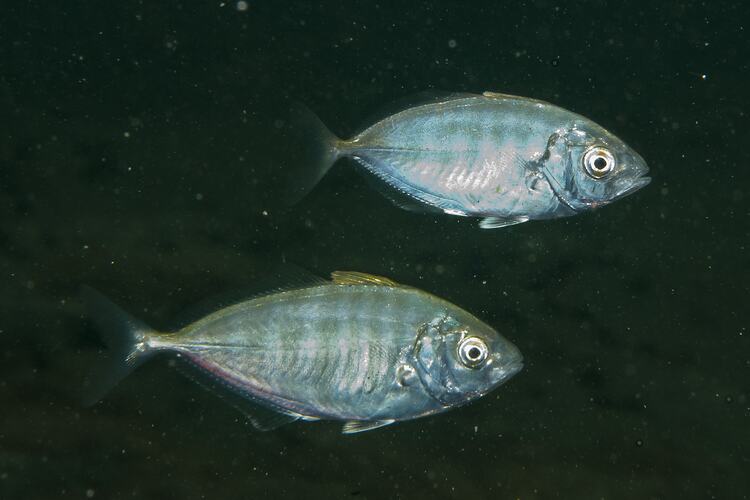General Description
Body deep, oval and compressed (narrow from side to side) with a row of plates (scutes) along the midside. Tail strongly forked and slender at the base. Dorsal and anal fins are far back on the body. The pectoral fins are long and scythe-like. Large individuals develop a prominent hump on the forehead. Greenish-blue above, silvery below, with a large black spot on the gill cover. Body up to 94 cm. Previously confused with Pseudocaranx dentex which is not found in Australian waters.
Biology
Large mobile schools of Silver Trevally move in and out of estuaries, and often hang around jetties and piers. Silver Trevally are taken by commercial and recreational fishers.
Distribution
New Zealand. Eastern, southern and southwestern Australia.
Habitat
Inshore and offshore reefs, bays and estuaries, in depths of 0-200 m
More Information
-
Animal Type
-
Animal SubType
-
Brief Id
An oval-bodied fish with a forked tail, scythe-like pectoral fins and plates along each side. Green-blue and silver with a black spot on the gills.
-
Colours
Greenish-grey, Silver, Yellow
-
Maximum Size
94 cm
-
Habitats
-
Diet
Carnivore
-
Diet Categories
Invertebrates
-
Endemicity
-
Commercial
Yes
-
Conservation Statuses
CITES: Not listed, FFG Threatened List: Not listed, EPBC Act 1999: Not listed, IUCN Red List: Least Concern
-
Depths
Shallow (1-30 m), Deep ( > 30 m)
-
Water Column Locations
Midwater
-
Taxon Name
-
Scientific Author
(Cuvier, 1833)
-
Common Name
Silver Trevally
-
Kingdom
-
Phylum
-
Subphylum
-
Superclass
-
Class
-
Order
-
Family
-
Genus
-
Species Name
georgianus





